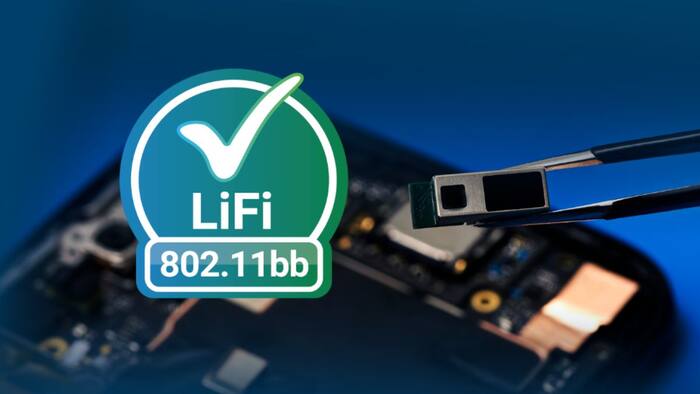
Written By Shweta Ganjoo
Published By: Shweta Ganjoo | Published: Jul 17, 2023, 10:53 PM (IST)


Wireless Fidelity or Wi-Fi, as it is popularly called has been the backbone of internet connectivity in homes, offices, college buildings and even public spaces for a long time now. It has revolutionised the way we access the internet and what we do with the information that we get. But very soon, Wi-Fi will get a competitor that is easy to access and slightly better to use. IEEE (Institute of Electrical and Electronics Engineers) recently approved a new wireless standard dubbed as IEEE 802.11bb or Li-Fi, short for Light Fidelity. Instead of using RF waves, this new wireless standard uses light for providing access to high-speed internet connectivity. Also Read: Hidden Wi-Fi Settings You Should Change Right Now
What makes Li-Fi unique, other than its ability to use light for communication, is the fact that is offers better download and upload speeds than conventional Wi-Fi. Also, its ability to easily integrate with existing Wi-Fi hardware. Also Read: Google Warns Users: Free Public Wi-Fi Isn’t As Safe As You Think
Li-Fi, as mentioned before is a wireless technology that uses light instead of using radio frequencies, used in Wi-Fi, to transmit data. Li-Fi is a part of light communication and a derivative of optical wireless communications (OWC) technology that uses light from light-emitting diodes or LEDs as a medium to enable high-speed communication in a manner that is similar manner to Wi-Fi.
It operates in the wavelength between 800nm to 1000nm and offers transmission speeds between 10Mbps and 9.6Gbps. By comparison, Wi-Fi operates in the wavelength between 120mm (2.4 GHz) and 60mm (5 GHz), and it offers operating speed that varies with the version being used. For instance, Wi-Fi 6, just like Li-Fi, offers a top operating speed of 9.6Gbps. Wi-Fi 7, on the other hand, offers a top operating speed of up to 46Gbps. Google Pixel 7 Pro, for example, offers Wi-Fi 6. However, devices with Wi-Fi 7 are scarce to find at the moment and they usually come at a steep price. Also, used not only need a Wi-Fi 7-enabled device on the receiving end, such as a smartphone or a laptop, but also a Wi-Fi 7-enabled router to get speed up to 46Gbps.
What makes Li-Fi so special is the fact that it can be deployed with little modification to the existing Wi-Fi hardware. Simply put, Wi-Fi chip makers can make little changes to the existing Wi-Fi chips to enable them to support Li-Fi and Wi-Fi simultaneously. Simply put, it can be easily integrated with commercially available chipsets and ecosystem.
Plenty. In addition to providing access to high-speed internet connectivity, Li-Fi is easy to deploy as it requires minimum modifications to the existing chips. This not only makes it cheaper to deploy but also adds a new functionality to existing devices without adding the heft of a new component.
As IEEE explains in its 59-page document, light communication can be used in tandem with RF communication and it can be used everywhere RF communication falls short.
This includes areas such as defence and harsh environments, industries especially data centres and places where IoT sensors are used, smart buildings, retail and finance for indoor and shopping, in smart cities, and in smartphones and smart homes to name a few.
What’s more, it doesn’t require special routers. It can be deployed using off-the-shelf components such as LEDs, laser diodes, and silicon photodiodes. “IEEE 802.11bb offers the simplest integration route with the highest number of possible device integration options,” IEEE says. The organisation says that Li-FI is ideal for device-to-device (D2D) communication, and short-range mobile access. Simply put, it is ideal to be used in homes, office spaces, malls, etc.
So far, the reactions to IEEE’s approval have been positive. Scottish firm pureLiFi and German company Fraunhofer HHI have welcomed the release of IEEE 802.11bb as the latest global light communications standard. Experts believe that Li-Fi will help in providing secure internet access in the home and office while expanding to high-speed internet ready use-cases such as mixed reality and spatial computing.